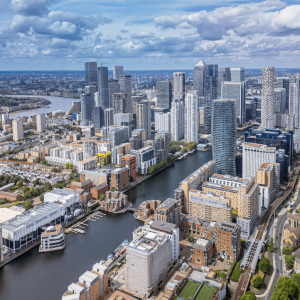

- Under Sustainable Finance Disclosure Regulation (SFDR) classifications, the share of assets in Article 8 or 9 funds continued to rise in the first quarter of this year, reaching 46%.
- A total of 15 asset managers now have more than 50% of their marketable funds labelled as either promoting a positive environmental/social outcome or sustainable.
- The total number of funds to have been reclassified as Article 8 or 9 has reached 1,800 since last March, when SFDR rules came into play.
Given the market’s appetite for sustainable products, it is no surprise that the proportion of “green” funds continues to rise at a healthy clip.
The share of total investment funds labelled as either ‘light green’ Article 8 or ‘dark green’ Article 9 under the EU’s Sustainable Finance Disclosure Regulation (SFDR) classification system looks set to reach 50% within the next few months. By the end of March 2022, the proportion of Article 8 or 9 assets stood at 45.6% – up from 42.4% on the previous quarter.
Under SFDR rules, to be classified as Article 8, products must promote a positive environmental or social outcome. Those specifically tailored as sustainable investments are categorised as Article 9, although additional information explaining methodology is required.
Approximately 1,800 funds have shifted classification from Article 6 – funds that are considered not to integrate any form of sustainability – to Article 8 or 9, or from Article 8 to 9, since March last year when the contentious SFDR rules came into force, according to Morningstar research.
Competition, it seems, is heating up between asset managers seeking to offer the highest proportion of funds with green and sustainable qualities. Based on the latest available data from Morningstar, 15 asset managers now class more than half of their funds Article 8 or 9. Swedbank, AllianceBernstein and Robeco populate the top three spots.
Capital Monitor’s analysis of Morningstar data finds that between June 2021 and March 2022, although almost the same asset managers dominated the top eight suppliers of Article 8 and 9 funds, overall market share has diluted as more managers launch sustainable funds.
SFDR Fund launch slowdown
But while the share of assets classed as Article 8 or 9 is increasing, the overall share of new funds with the same classifications accounted for less than half of all new product launches since January, according to Morningstar research.
Over the past three months, 47% of the 294 new funds launched were classed as Article 8 (35%) or Article 9 (12%) under SFDR, compared with a 53% share of Article 6 funds. In comparison, in the third quarter of 2021, Article 8 and 9 funds together made up 55% of all new launches.
It is too early to tell whether this is the beginning of a trend; launches in the first quarter of the year are historically lower than in the fourth quarter, while SFDR classification has only just past its first birthday.
SFDR reclassification
The overall growth in sustainable assets along with the declining share of new sustainable fund launches can be explained by the number of funds that have been reclassified from Article 6 to Article 8 or 9, says Hortense Bioy, director of sustainability research at Morningstar.
And while it is reasonable to assume the growth in sustainable assets are a result of more green funds being launched, Bioy believes it is more likely a result of fund managers converting “conventional” funds, including passive exchange-traded funds (ETFs) and index funds into ESG funds.
Unfortunately, data is hard to find to prove this theory. But Bioy says, anecdotally, “most asset managers”, notably BlackRock-owned iShares, and French asset managers Amundi and BNP Paribas Asset Management, are among those switching their Article 6 passive funds to 8 or 9.
Generally speaking, asset managers can switch a passive fund to an existing, sustainable index, from within the same index family, Bioy explains. Less frequently, asset managers work with a third party to create a new index that integrates ESG metrics.
While this process sounds simple, there are hurdles to overcome. For example, in February this year, two of BlackRock’s ETFs were prepped to switch to benchmark ESG indices but failed to garner majority shareholder approval.
The risk of greenwashing
There is also a worry that some fund managers will take advantage of the lack of enforcement around SFDR classifications to boost investor appeal without making much material difference. The implementation of more stringent SFDR reporting, requiring asset managers to define the content and methodology behind their disclosures, has been pushed back six months to January 2023, heightening the risk of greenwashing.
According to Morningstar, the market has “legitimately raised concerns that asset managers are greenwashing their product ranges, and that investors could be misled [into] thinking that funds now marketed as promoting ESG characteristics or pursuing sustainable goals are noticeably different from what they were prior”.
While some funds have used SFDR “to overhaul their strategies entirely to align with sustainable objectives, others have simply formalised ESG exclusions… without making significant, or any, changes to the investment process”, Morningstar argues.
One example, it says, is UK-based asset manager Artemis, which recently notified fundholders that it will "add exclusions-related language to some funds" prospectuses to "clarify the way in which the sub-fund is currently managed", with no "change to the sub-fund’s investment strategy".
As the pressure for asset managers to offer sustainable products intensifies while tighter SFDR regulation remains on the back-burner, opportunities for greenwashing persist. In the meantime, investors will have to make careful decisions about whether or not a fund’s reclassifications fit with their investment objectives.






